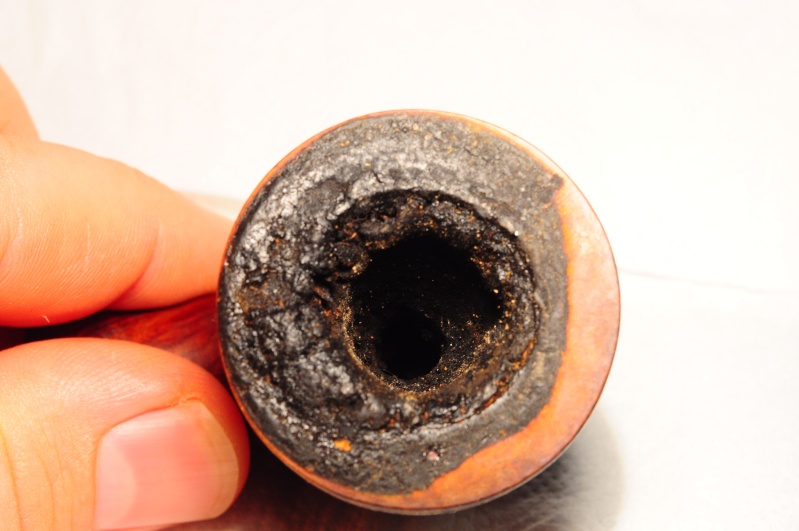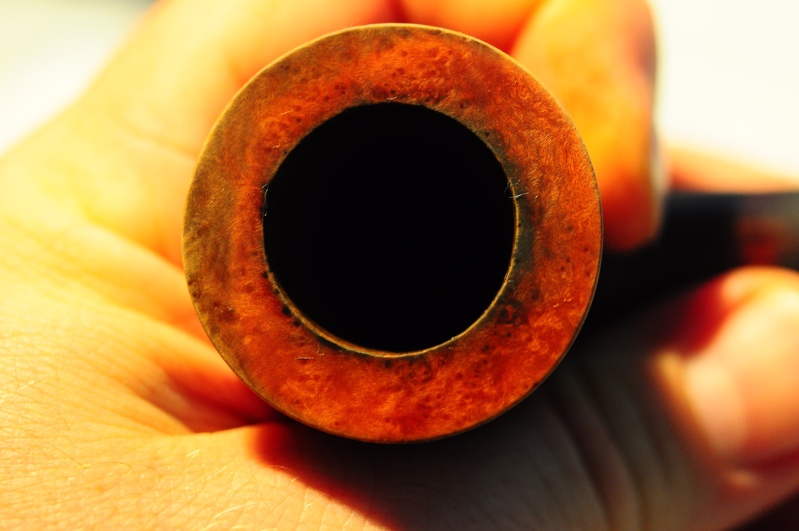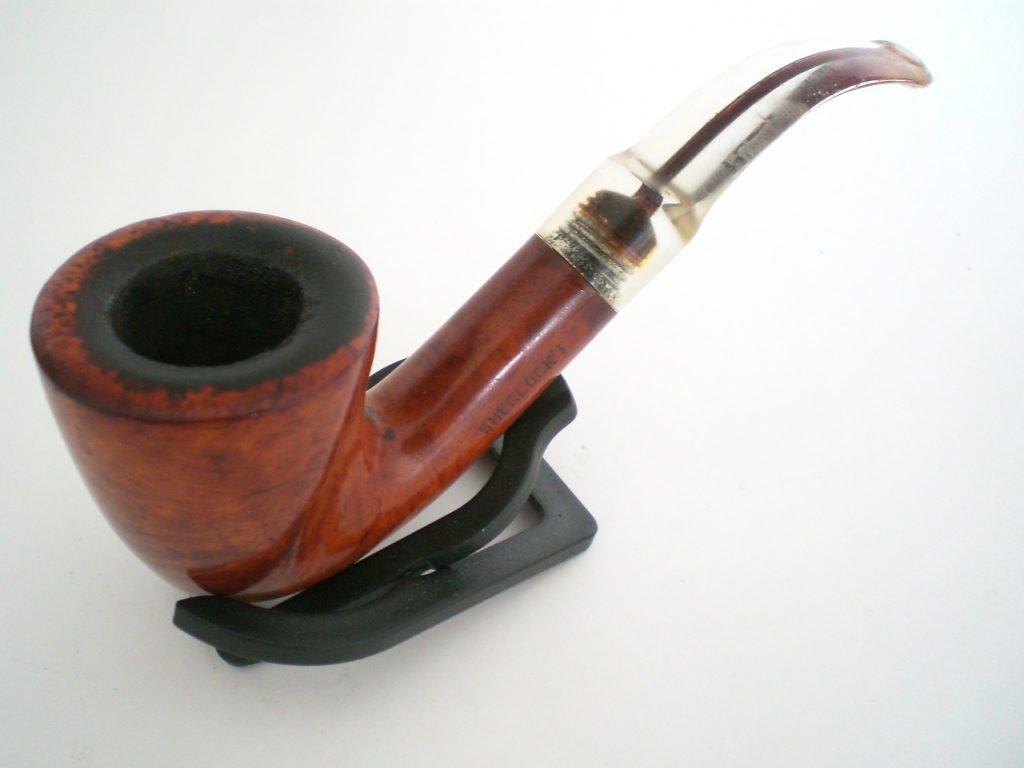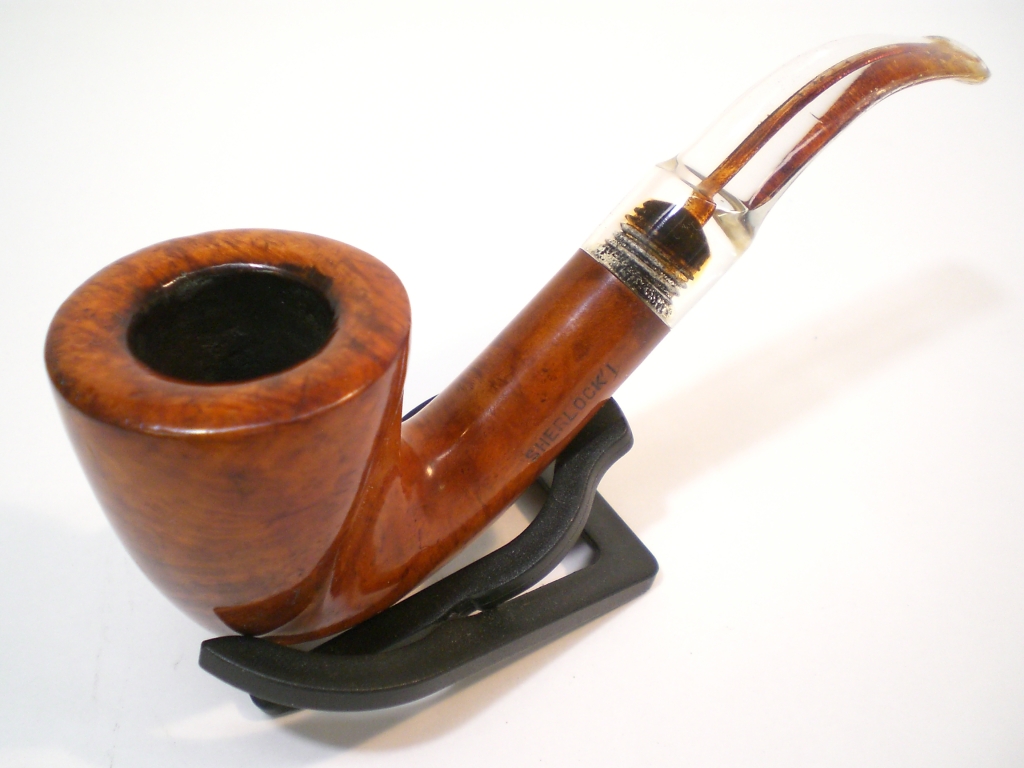Why oh why do eBay sellers continue to sand the rims of pipes? I find this practice to be immeasurably intolerable and regularly fire off irate emails to these people. I guess that makes me a serial pest, but as a Friend of Briar I feel it is my duty to inform these people of proper cleaning technique. If in doubt, I always say, let the buyer do it themselves then and only then will they be happy! Perhaps if more of us bombard them they will get the point. But seriously, many of them are quite nice about it and do in fact take advice well.
Below is a before-and-after of a recently revamped pipe. It started life as a stummel in a box of pipes I got from Germany. If you're interested in the full story (and want to see the finished pipe) you can see it on the hobo Pipe's blog at: hobopipes.blogspot.com.au/2013_02_23_archive.html
All that was used was some very slightly soapy warm water and a cotton tea-towel. There is still some deeper gunk in the second picture, but after a quick bout with the buffing machine it came up spotless!


Below is a before-and-after of a recently revamped pipe. It started life as a stummel in a box of pipes I got from Germany. If you're interested in the full story (and want to see the finished pipe) you can see it on the hobo Pipe's blog at: hobopipes.blogspot.com.au/2013_02_23_archive.html
All that was used was some very slightly soapy warm water and a cotton tea-towel. There is still some deeper gunk in the second picture, but after a quick bout with the buffing machine it came up spotless!











![[3-Size Set] Copper Pipe Cleaner for Drill, Clean 1/2, 3/4, 1-in Copper Pipes & Tubes for Soldering, 3 Tube Cleaning Brushes, Model InerLok050, 075, 100, w/ Stainless-Steel Wire Bristles & 1/4” Shank](https://m.media-amazon.com/images/I/41QVxunlqML._SL500_.jpg)















